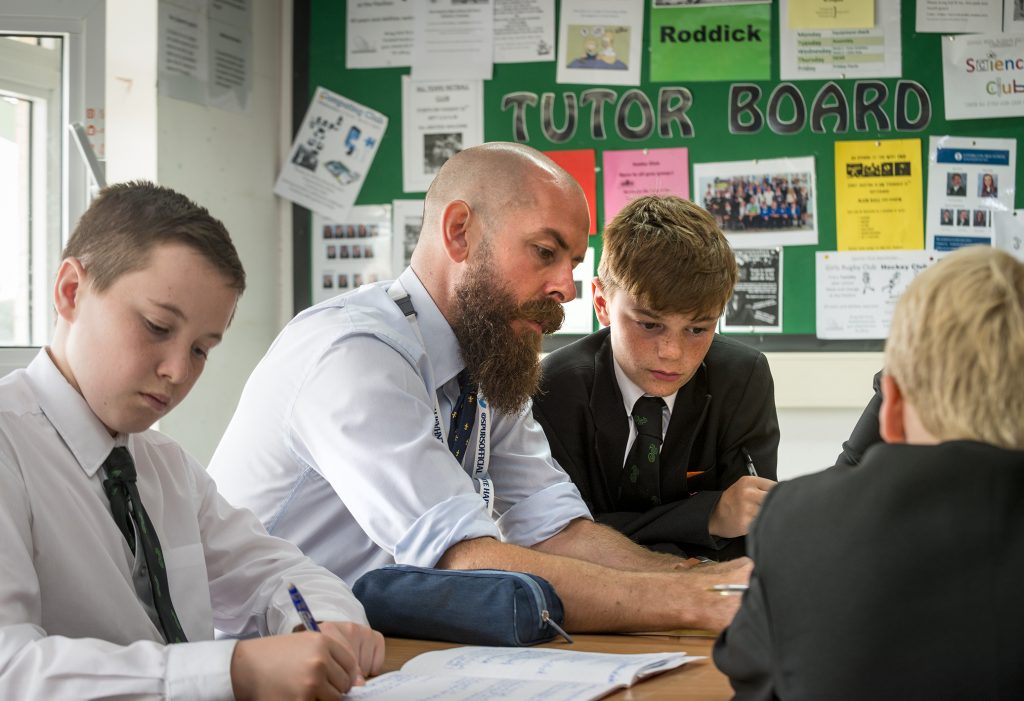All too often, in classrooms up and down the country, teachers hear this phrase: “What was the question again?” This is usually followed by the teacher repeating the question and hoping the student has now paid attention and is mulling over a response. Students’ attention is crucial and too often found lacking during day-to-day classroom activities. The dictionary definition of attention is ‘the act of listening to, looking or thinking about something/somebody carefully’. Without this careful attention our efforts as teachers fall on stony ground.
The impact of high quality teaching stands or falls on students’ ability to pay attention and focus on the task in hand, whether that be listening to a teacher’s explanation, completing a task or responding to a question posed by the teacher. The explanation, question or task could be the perfect structure for students to flourish and understand the concept being explored, but if the student is thinking about what they are doing at lunchtime or the big game at the weekend then the opportunity to learn is lost. Adam Robbins unpicks attention and offers an insight into it from a school improvement basis here. Adam identifies 3 reflective questions on attention linked to teaching and learning. These questions provide a useful framework to start to shape the discussion around attention in our schools
1) What routines does the teacher use to ensure students are able to pay attention to the key things?
2) How has the teacher designed resources and explanations to support attention?
3) What questioning strategies does the teacher use to support students to pay attention and draw students attention to the most vital information?.
Tom Sherrington hones in further when discussing the importance of attention here. Tom explains the Oliver Caviglioli infographic and identifies that attention is the first step on the journey of thinking, remembering, retrieving and using information. Tom suggests that “students don’t absorb ideas from lesson interactions because their attention is not given to the specific learning points in question: it might be elsewhere. You can’t just learn stuff because of a discussion other people are having in the same room”. The solution strategies Tom provides are: strategies around securing attention, using narrative structures and inclusive questioning. Below are some thoughts on what these might look like in a classroom.
Strategies around securing attention
To exemplify this I am going to focus on one tool we can use to secure attention, mini whiteboards. There are many ways mini whiteboards can be used, below are just some of the ways they can be used to secure attention:
– Knowledge recall – as opposed to posing a question and then waiting for a few seconds before giving a students name, in the typical cold calling sense. Why not pose a question, pause for a few seconds and then get students to write down their answer on a mini whiteboard. You can then circulate around the room observing students answer the question or ask all students to turn them over at the same time, allowing your time to see answers from all students. The key here is that all students are now focused on responding to your question, there is no room to opt out.
– Low stakes quiz – in a way to lower the stakes even more and ensure students are focused on the task in hand while avoiding the “I don’t want to get it wrong in my book” use mini whiteboards for the low stakes quiz. You can then circulate the room and see students’ responses, identify and/or address any misconceptions as they arise. The key here is that all students are attending to the task in hand with no room to opt out.
– Tell me why – Following a verbal response to a question, a subtle and effective way to raise the attention and include the whole class is to ask the students to tell you why the answer is correct or incorrect on their mini whiteboard.
– Write, pair, share – In the same vein as think, pair, share, this includes a question followed by some thinking time, but as opposed to sharing with their partner verbally, you get all students to then write their response on a mini whiteboard before discussing their responses and thoughts with their partners. This then alleviates one student dominating the paired talk and the other getting away with not having to attend to the question, as all students have to write their answer on their whiteboard before any discussion takes place.
In short, ensuring students pay attention and think intently about the concepts we want them to think about every minute of every day is hard. Therefore, understanding the barriers and being explicit and unwavering on the strategies used to ensure students pay attention is fundamental. After all, as Peps McCrea says: “attention is the gatekeeper of learning” and is essential for information to be used, remembered, retrieved, applied and retained.


